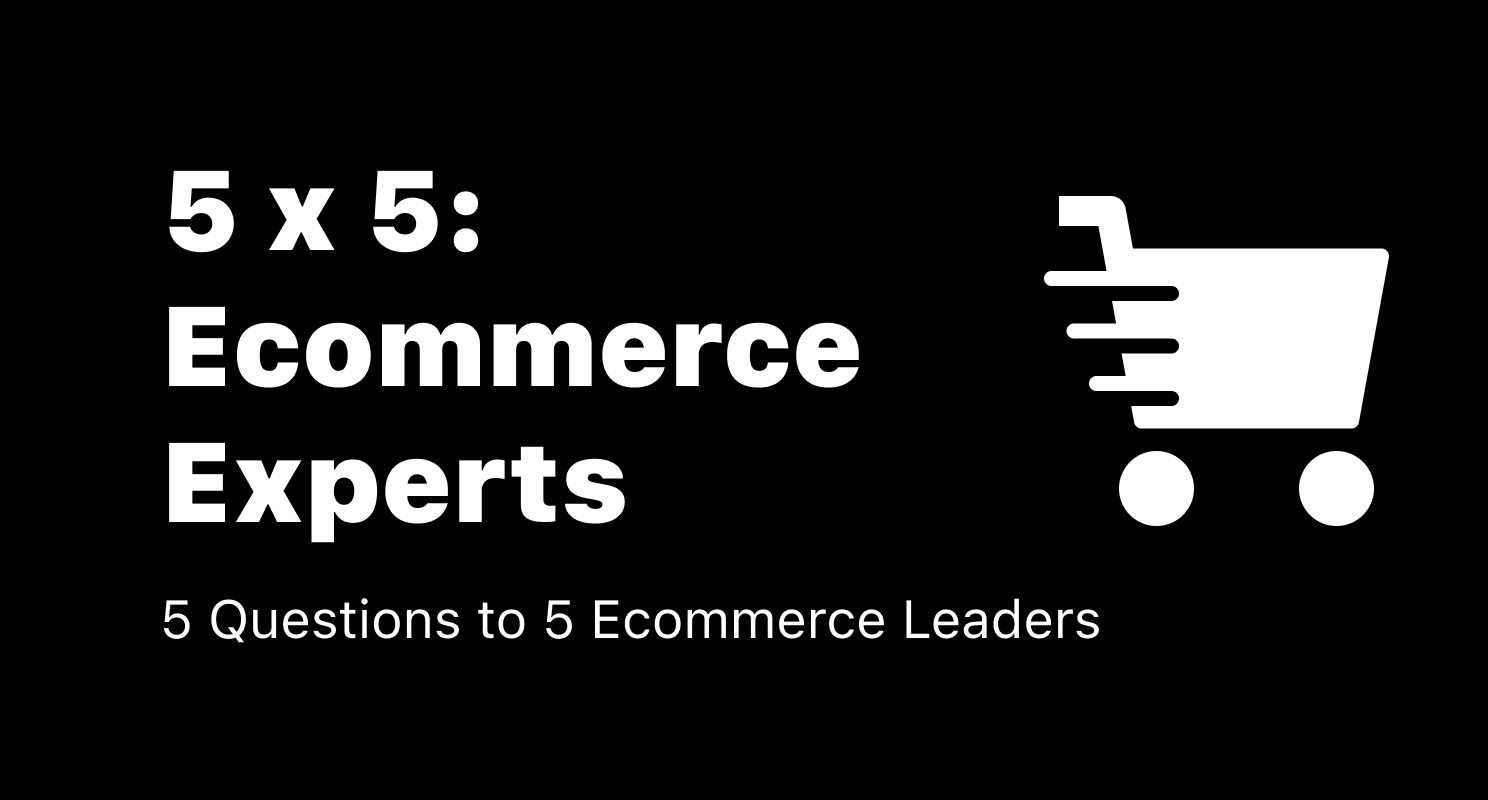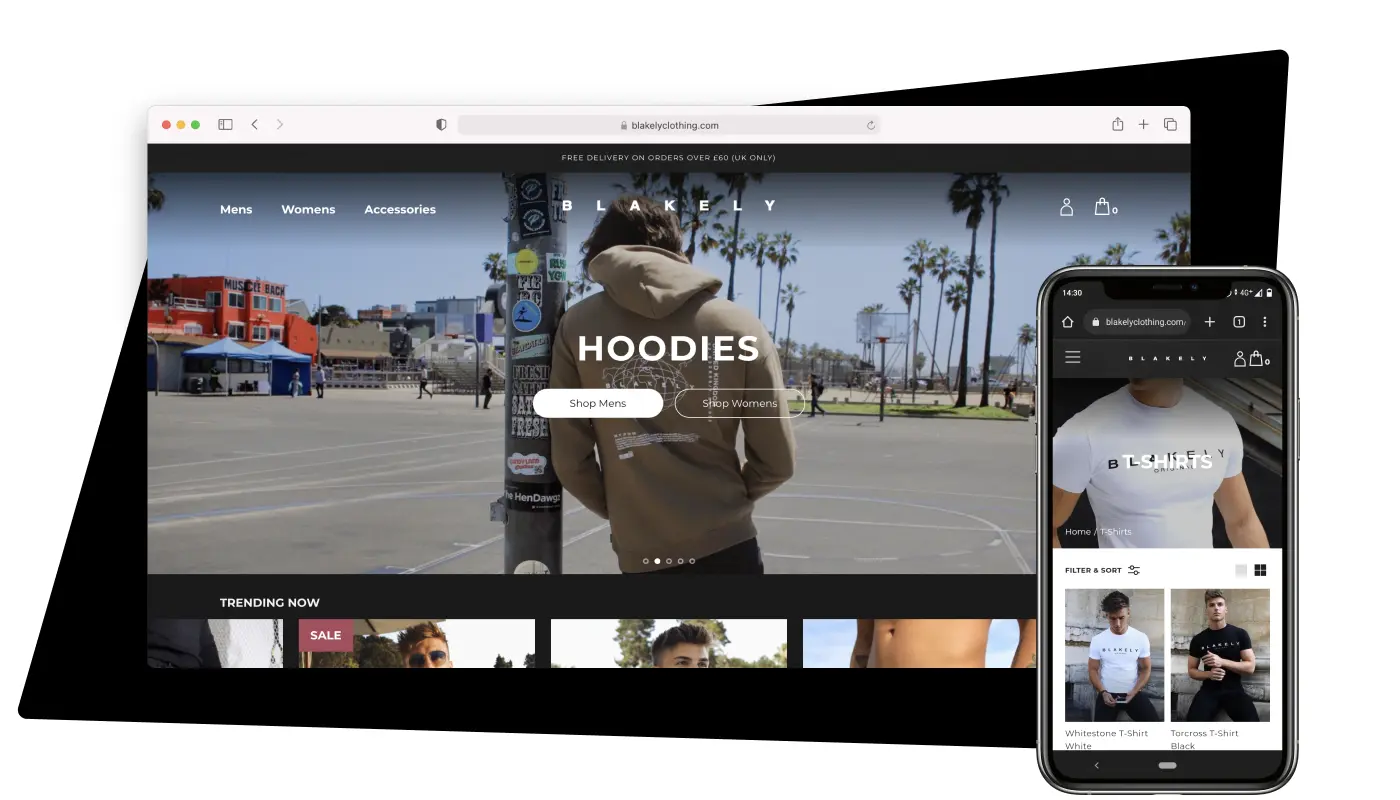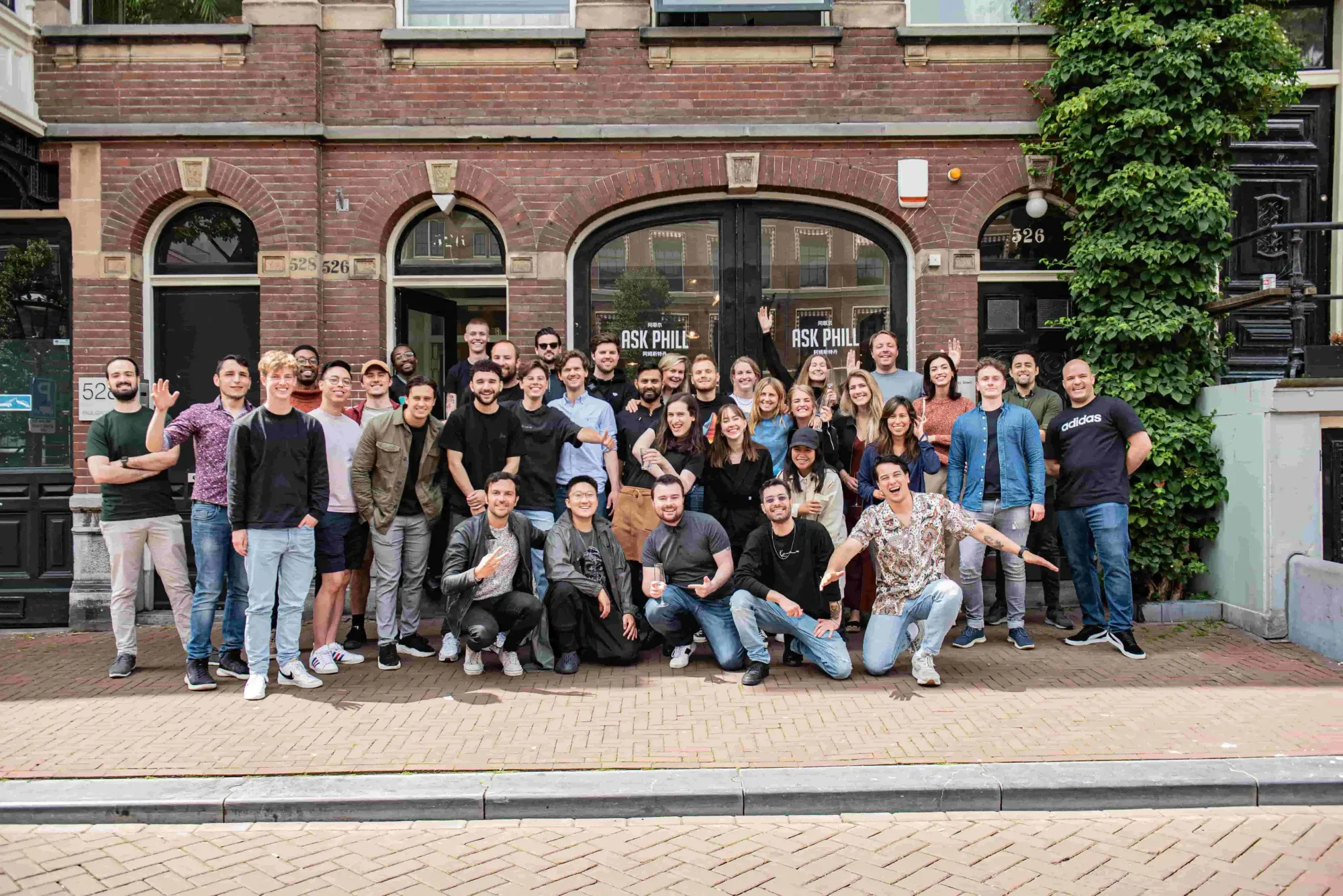5 x 5 - 5 Questions to 5 Leading Ecommerce Experts (Part 1)

In our 5 x 5 Ecommerce Experts interview series, we ask 5 experts in the ecommerce industry to answer 5 short questions on the state of ecommerce today. Because who doesn't want to learn from industry leaders?
Topics for the questions are retention, CX, social commerce, messaging apps and emerging trends. If you want to get inspired by and learn more about what goes on in the minds of the ecommerce greats, keep reading.
The experts we interviewed
1. Nathan Lomax, Co-Founder at Quickfire Digital
2. Liam Quinn, Technical Director at Vervaunt
3. Martijn Wijsmuller, Founder & Commercial Director at Ask Phill
4. Coen Fredriks, Growth Strategist at Code
5. Marcel van Plateringen, Managing Partner at Nakatori
1. Nathan Lomax, Co-Founder at Quickfire Digital

Nathan Lomax is the Co-Founder of Shopify (Plus) Agency, Quickfire Digital. They help ambitious ecommerce brands scale by developing Shopify & Shopify Plus websites, but also support ongoing growth strategies.
Retention: What do you believe to be the most highly effective customer retention strategy in ecommerce, currently?
I’m a bit of a sucker for those little added extras, and I think brands can really stand out when they go above and beyond for their customers.
A little thank-you gift when you open your packaging, a handwritten note, a text giving you a discount.
And they need to be genuine. To improve retention, they shouldn’t be the kind of deals which last for only a limited time. That’s like saying ‘we’re thinking of you…but only for the next few days’.
If you truly care about your customers then don’t put any unnecessary restrictions in place.
CX: How do ecommerce businesses maintain a positive customer experience in 2022?
Do the fundamentals well. I’ve already said that I love the added little extras some brands provide, but they’re meaningless if customers are receiving poor experiences elsewhere.
As a development agency, having a website which is fast and clean is one of those fundamentals.
Society has an expectation of wanting everything immediately - next or same-day delivery, on-demand streaming, social media responses within an hour - and the stats show that slow websites equal lost customers.
As businesses add new content and new apps, they need to ensure they’re staying on top of their website speed and experience.

Social Commerce: What do you think, is selling directly through social media platforms going to change the face of ecommerce?
Social commerce is certainly adding another string to the bow, and enriches the world of ecommerce, but I’d stop short of saying it’s going to disrupt it entirely.
I see it driving sales which perhaps would never have happened rather than replacing sales in other areas: pushing new products into people’s feeds rather than reducing website browsing and buying.
And I believe that the social media platforms themselves need to work harder on building trust. There are, rightly, concerns about how our personal data has been used in the past so when you add in financial details, these are multiplied.
Messaging Apps: How should online stores use WhatsApp, Instagram DM, Messenger and SMS to improve their messaging workflows?
Carefully! There’s no doubt that these can all be valuable touchpoints, but I believe all messaging - just as with all the best marketing - has to keep customer needs front of mind.
Ask yourself why you delete so many emails without even opening them? Then take a look at the ones you do open - why is that?
Brands need to avoid simply replicating via messaging apps what they’re doing via emails, otherwise customers are just going to hit that delete button again.
Where’s the value for the customer? If you’re another annoyance, you’re just going to get the same delete treatment.

Emerging Trends: What is the biggest and most groundbreaking emerging trend in the field of ecommerce?
I still think headless commerce has a huge amount of potential which hasn’t been tapped into yet.
Layering amazing content on top of a slick e-commerce engine is still pretty rare and can feel a bit disjointed - when someone gets that right I think we might see some truly exciting online developments.
The vast majority of e-commerce websites are focused entirely on the transactional process.
While that should always remain a high priority, headless could draw us into new customer experiences, deepen brand relationships and, ultimately, increase loyalty and retention.
2. Liam Quinn, Technical Director at Vervaunt

Liam Quinn is Technical Director at forward-thinking paid media agency and ecommerce consultancy, Vervaunt. The agency is designed and built for ambitious ecommerce brands looking for guidance, advice, optimisation and strategy.
Retention: What do you believe to be the most highly effective customer retention strategy in ecommerce, currently?
I’m a big fan of genuine great customer retention being about proactively looking after your loyal customers.
Rewarding your top tier customers, without expecting anything in return and without forcing a purchase - spontaneous free delivery, gift card or free gift just to say thanks.
Rewarding mid-tier customers in a similar way to turn them into highly engaged top tier customers.
CX: How do ecommerce businesses maintain a positive customer experience in 2022?
My default here always comes back to performance & accessibility. There are a lot of nice tactics onsite or engaging features that can create a positive experience - but the fundamental is to absolutely ensure that every visitor has a frictionless journey through the site.
Following this, the next big question is how best to offer trust & clarity to customers. A good tip is to implement post-purchase surveys and monitor any areas that are causing dissatisfaction, for continuous improvement.
Social Commerce: What do you think, is selling directly through social media platforms going to change the face of ecommerce?
On the one hand, I do think social commerce is going to have a huge impact. The focus has always been about removing friction, reducing the amount of clicks to checkout, trying to implement a fast one-click checkout.
This is the next evolution and will certainly account for a large proportion of online sales very soon. My prediction would be that ‘niche’ products / dropshipper style startups will end up being purely social based rather than Shopify etc.
But while this convenience will be effective, a great CX cant be achieved this way. Brand building & content-led ecommerce will still rely on their sites.
Messaging Apps: How should online stores use WhatsApp, Instagram DM, Messenger and SMS to improve their messaging workflows?
SMS workflows have exploded in the last year or so, and could be one of the best areas to get ROI on the time you invest into it currently. A few great examples I’ve seen are ease of managing subscriptions, or last minute promotions for the right vertical - Dominoes obviously being the king of this tactic.
WhatsApp similarly is a big trend, particularly around customer service and making that customer interaction more instant and personal.
There are some really impressive stats to be had through these methods, the key thing I would say is to appreciate they’re a lot more intrusive than email.
Open rates are way higher, but abusing that by spamming promotions or pushing to an unengaged customer will risk doing more harm than good. Position these methods as a benefit to the customer, and allow them to decide they want to be communicated this way.
Emerging Trends: What is the biggest and most groundbreaking emerging trend in the field of ecommerce?
In terms of groundbreaking, I'm fully on board with Blockchain/Web3 technologies being transformative in the coming years.
The NFTs trend of recent times can easily be dismissed as a fad, but it’s clear to see how and where the underlying technology will be used to change things like loyalty/promotions/refunds/recommerce etc.
3. Martijn Wijsmuller, Founder & Commercial Director at Ask Phill

Martijn Wijsmuller is the Founder and Commercial Director of Amsterdam-based Shopify Plus agency, Ask Phill. They build data-driven, scalable Shopify websites for fashion, lifestyle and beauty brands across Europe.
Retention: What do you believe to be the most highly effective customer retention strategy in ecommerce, currently?
I believe that customer data can provide a lot of insight into different customer audiences and their wants and needs. By analysing this data, you are able to customise your targeting towards people that are loyal customers and customers that you are about to lose.
The key is to be data-driven, not data-informed.
CX: How do ecommerce businesses maintain a positive customer experience in 2022?
Listening to customer feedback should be the number one priority. Customers that feel heard and valued are always more likely to stay, return and buy again.
We all know it’s getting harder and harder to attract new customers, so retention is more important than ever.

Social Commerce: What do you think, is selling directly through social media platforms going to change the face of ecommerce?
In general, consumers are more easily persuaded to buy a product that they’ve seen on social media. The benefit of selling through social media platforms is that people are able to see the product in action, without the obvious branding of a company website.
So yes, social commerce will increasingly change the ecommerce landscape.
Messaging Apps: How should online stores use WhatsApp, Instagram DM, Messenger and SMS to improve their messaging workflows?
Messaging apps and instant messaging is ideal for customer support. If something goes wrong - if a product is faulty, your supply chain fails, etc. - the best thing a brand can do is communicate quickly and efficiently with a customer.
Messaging apps are the best way to stay in touch in a warm, familiar and friendly manner, and this is key to building long lasting relationships.
Emerging Trends: What is the biggest and most groundbreaking emerging trend in the field of ecommerce?
The turn to data-driven ecommerce. Data has already revolutionised the world we live in, to be honest ecommerce has been a little slow on getting on board but more and more brands are now taking notice of its transformative powers.
Data-driven store optimisation, knowing exactly what your customers expect from your store experience and delivering it to them exactly where they want it, this is the future of ecommerce.
4. Coen Fredriks, Growth Strategist at Code

Coen Fredriks is Ecommerce Growth Strategist and Specialist at Code. Code was the first official Shopify Plus Partner in the EU and they've been building cutting-edge webshops ever since.
Retention: What do you believe to be the most highly effective customer retention strategy in ecommerce, currently?
What works in retention depends on your market, but in general, the first and second experience a client has during a purchase on your ecommerce platform is crucial.
The quality of the product, the service you provide (loyalty program, different shipping options, return policy, fast check-out etc.) and the clearness in communication regarding the delivery date will make the difference.
CX: How do ecommerce businesses maintain a positive customer experience in 2022?
This is a long list and it differs for every market and customer group, but to name a few:
- Clear navigation and great search
- Clear communication about the delivery date, return policy and guarantees (free return if the product is not what you expected)
- Quick and clear customer service via different channels
- Social proof (social integrated and reviews)
Social Commerce: What do you think, is selling directly through social media platforms going to change the face of ecommerce?
It’s already here and I believe it will become huge. We noticed a huge change within Instagram and Pinterest in the last few weeks on how to present and integrate shopping.
Within Instagram, every individual can start their own shopping page. The leading social platforms want the transaction within their platform instead of outside their platforms. Besides, social media is a great place for inspirational shopping.
Messaging Apps: How should online stores use WhatsApp, Instagram DM, Messenger and SMS to improve their messaging workflows?
Make sure to centralize all your customer service communication, so you never miss a question. Every customer has their own preferred communication channel. As an ecommerce brand, you should be there where your customers are.
Think of a solution where you can collect customer data to get a better understanding of your customers and create personalized marketing campaigns based on customer segments.
Emerging Trends: What is the biggest and most groundbreaking emerging trend in the field of ecommerce?
For me right now, the biggest trend within ecommerce is resale. You allow your existing customers to sell their earlier bought products within your platform.
Within their account, they activate the product they want to resale with all historical data from the database (product description, images, etcetera).
When a product is sold, the seller receives a packaging slip to ship the product. When the deal is done, the seller chooses whether to receive the money in their account (let’s say €80) or receive store credits (€100), which you can spend on new products.
It’s sustainable and creates retention!
5. Marcel van Plateringen, Managing Partner at Nakatori

Marcel van Plateringen is Managing Partner at Amsterdam-based creative ecommerce agency, Nakatori. This digital creative agency specialises in e-commerce and builds digital flagship stores, online experiences, brands, campaigns, and concepts.
Retention: What do you believe to be the most highly effective customer retention strategy in ecommerce, currently?
That depends highly on the brand and product or service. The best and effective retention strategy is custom. It requires a deep understanding of your client and the relation with your product or service.
When and how should you reach out and engage? And with what tools like messaging, email, sms etc.
So get to know your customer and figure out how you can help them or understand when they might need your product or service again, and build communication around and towards that.
CX: How do ecommerce businesses maintain a positive customer experience in 2022?
Stand out from the crowd and stay one step ahead in communication. It sounds simple but is actually not. Try to keep in mind what your business is about.
What you are solving or how your product or service makes peoples’ lives better. Sharing that tends to rub off and sits well with your audience.
On the more practical side, it should be obvious to offer your customers a seamless experience from the moment they land on your site, to the moment they start using your product.
Just putting yourself in the shoes of the customer, really helps and offers that perspective.

Social Commerce: What do you think, is selling directly through social media platforms going to change the face of ecommerce?
Not too sure actually. In our experience we see that social platforms are more designed towards ‘likes’ and short sprints of attention.
However, the integrations available today, are allowing b2c businesses to offer seamless shopping experiences through channels like Instagram for example.
Some businesses are jumping on that bandwagon and I totally get that if your audience is mainly on and engaged at a social media platform.
I feel that for most small to medium sized businesses it’s a niche, and something that maybe takes more investment to get it up to par, then they can get out of it.
It’s another channel with lots of possibilities, but with so many channels in a competitive and fragmented space, your domain and online store should be a corner stone and a foundation of your online business.
Messaging Apps: How should online stores use WhatsApp, Instagram DM, Messenger and SMS to improve their messaging workflows?
We are big fans of messaging apps, as they are super efficient. Reach and talk with your customer on his or her own preferred messaging platform, while tools like Shopify Inbox or Intercom allows you to combine them in one custom messenger experience. So it’s efficient and easy to maintain.
Emerging Trends: What is the biggest and most groundbreaking emerging trend in the field of ecommerce?
I don’t believe anything groundbreaking is happening right now. In terms of trends, I still think ‘headless’ is there. It’s more accessible now, especially since Shopify announced Hydrogen.
But headless will never be for everyone. Then there are Membership Programs. Creating that Amazon-Prime style program that gives customers perks like discounts, access to certain collections etc, while unlocking a new revenue stream.
Last but definitely not least: owned marketing channels. Email, SMS and mobile apps continue to be important. As acquisition costs rise, retention becomes more important (and often, more profitable).
Communicate with your customers the way they want to be communicated with (email, sms or mobile push notifications) and drive repeat business.
Any other experts we should interview?
We really hope you enjoyed this first edition of the 5 x 5 Ecommerce Experts interview series. If so, stay tuned for the next edition.
Feel free to send in ecommerce experts you look up to, personally, to hello@shoppop.com and we’ll consider interviewing them, too.
And if you’re ready to get started with marketing on messaging apps like WhatsApp, Messenger, and Instagram DM, feel free to book a demo to check out ShopPop's platform.
If you’d rather figure everything out yourself, that’s just as easy. Simply sign up for a free account here to add new chat marketing channels to your Shopify store.